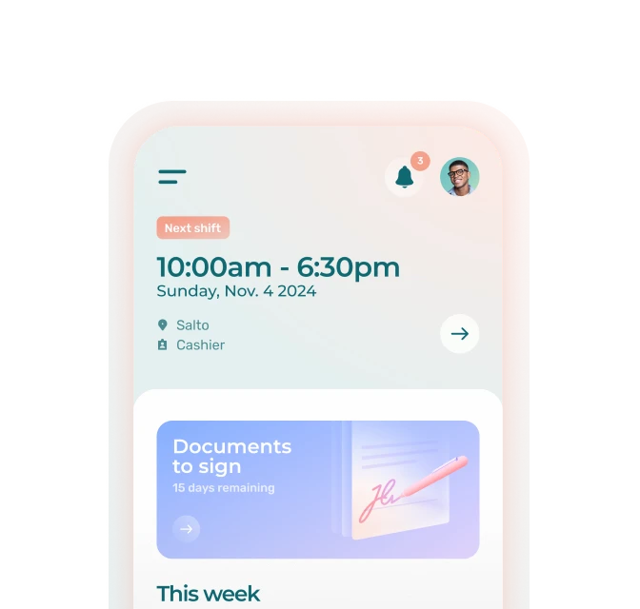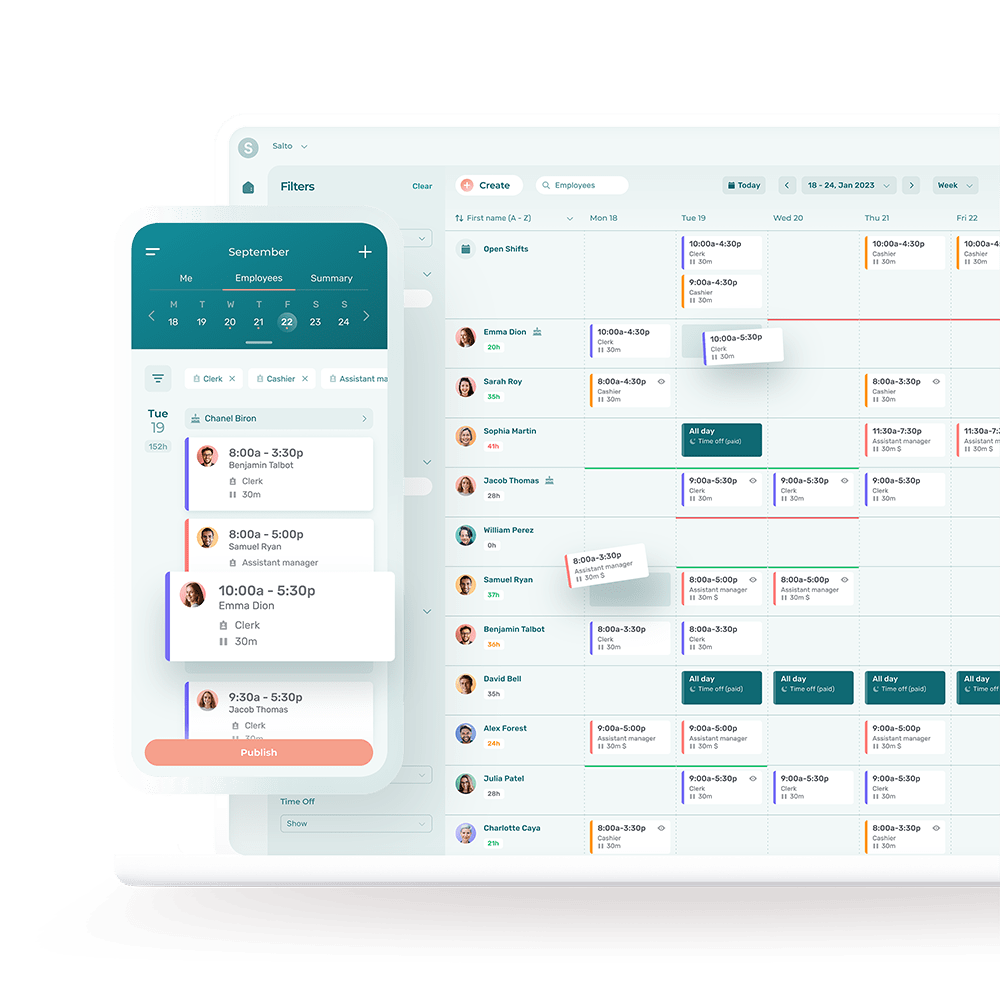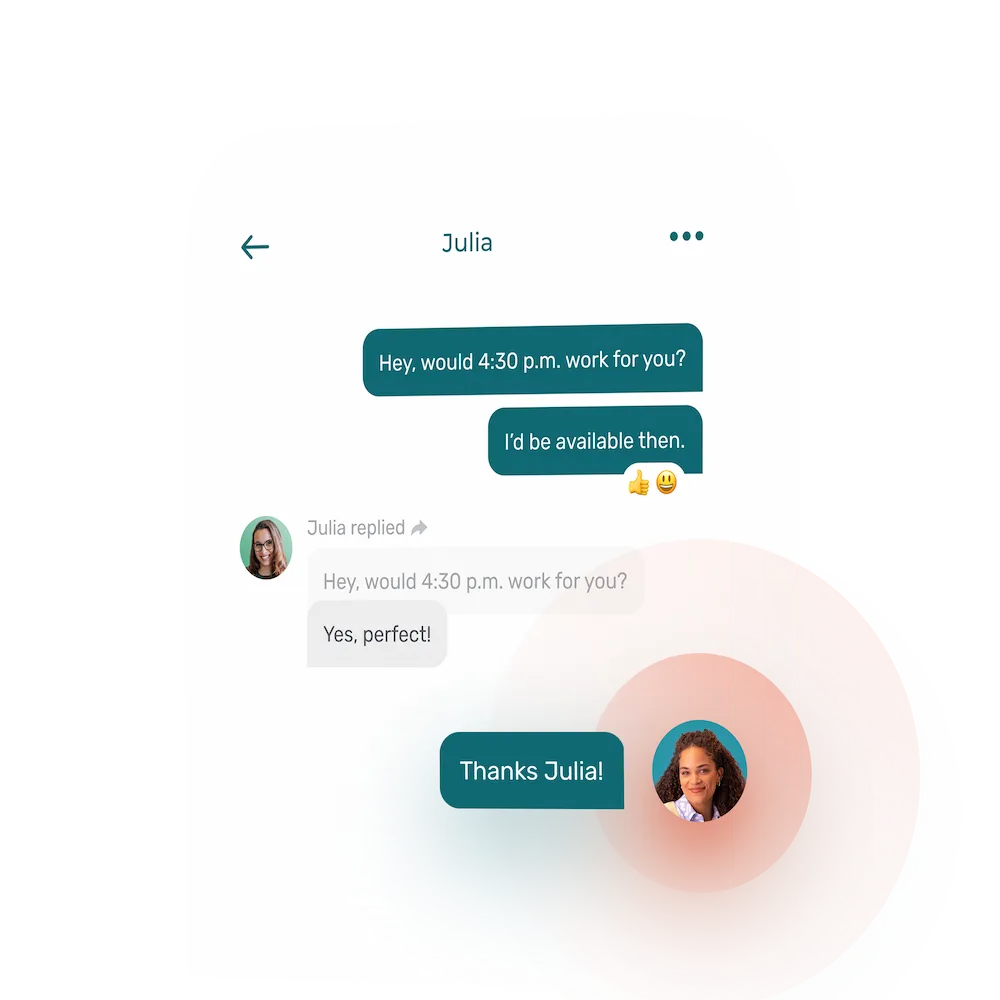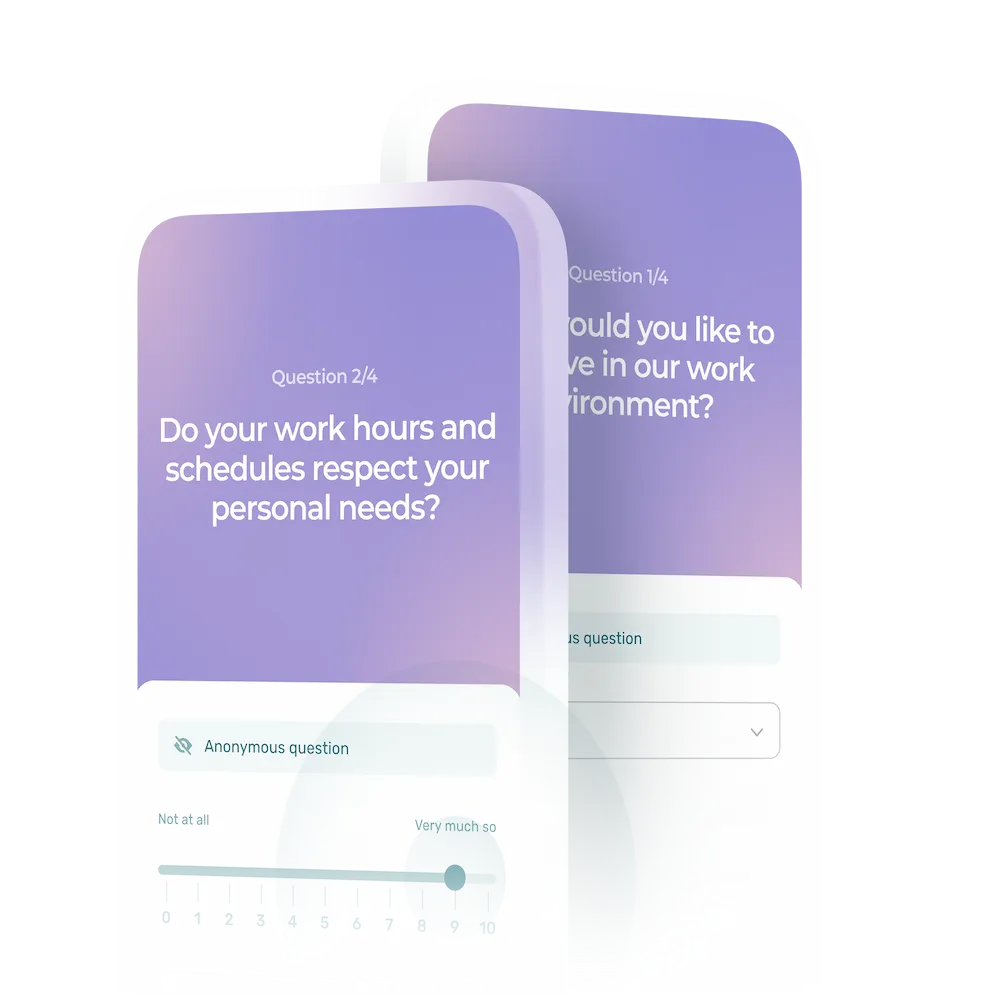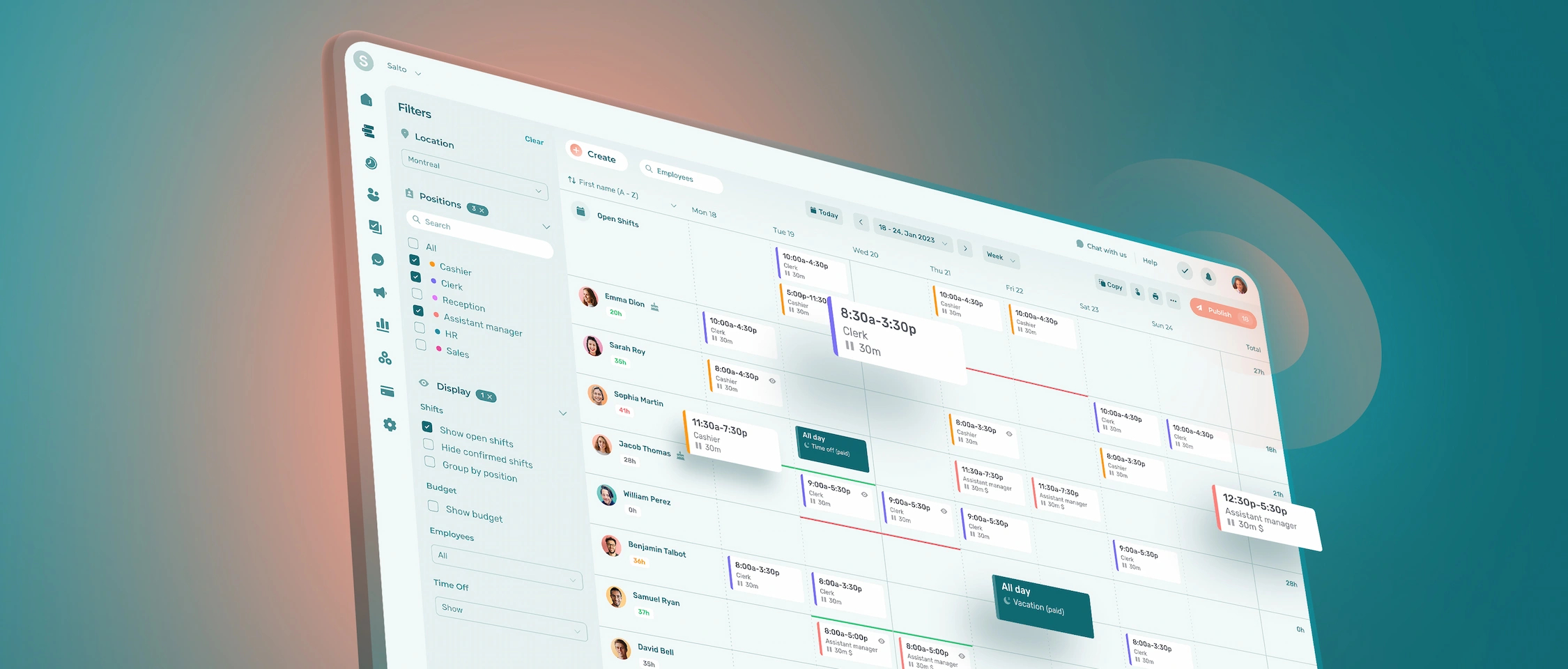Businesses sometimes need to get creative with employee scheduling to accommodate customers and increase profitability. If you need to schedule staff outside the regular business hours of 9 to 5, then a swing shift work schedule might be the best way to ensure you get the right coverage at the right time.
Learn more about how swing shift hours work. See the different types of swing shift schedules, along with their pros & cons. Pick up some best practices for scheduling swing shifts and find out if a swing shift schedule would make a good fit for your business.
What Is a Swing Shift Schedule?
A swing shift work schedule is a type of rotating schedule where team members work different day and night shifts in the same week. Swing shifts work particularly well in businesses that operate round-the-clock because they allow companies to meet customer demand and boost profitability.
While not all employees will want to work swing shifts, some greatly enjoy the freedom that comes with working different hours and shifts in the same week.
How Does a Swing Shift Work?
Each business may take a slightly different approach to its swing shift patterns, but the three most common swing shift schedules are the following:
- Employees work eight hours on a fixed shift or rotating shifts. These could be the morning shift, the evening shift, or the night shift.
- Employees work four ten hour shifts consecutively. They then get three days off work.
- Employees work intensive twelve hour shifts, followed by several days off after each shift.
Swing Shift Schedule Example
Here are two examples of what swing shift patterns might look like in the real world.
Example 1: Emergency medical technician
Our EMT has a four-day work week. Her swing shifts look like this:
- Monday: Swing shift from 7 am to 3 pm
- Tuesday: Swing shift from 3 pm to 11 pm
- Wednesday: Swing shift from 11 pm to 7 am
- Thursday: Off work
- Friday: Off work
- Saturday: Off work
- Sunday: 4-day work schedule restarts
Example 2: Worker at a manufacturing plant
Our manufacturing worker does 3 ten hour shifts per week. His weekly swing shifts look like this:
- Monday: Swing shift from 7 am to 5 pm
- Tuesday: Swing shift from 12 am to 10 am
- Wednesday: Swing shift from 8 pm to 6 am
- Thursday: Off work
- Friday: Off work
- Saturday: Off work
- Sunday: Off work
Which Industries Can Benefit From Swing Shifts
Many industries utilize swing shifts with great success, particularly those that implement a 24-hour schedule:
1. Healthcare
Healthcare workers often work in facilities that operate 24 hours a day. Nurses, doctors and other health care staff are used to working night shifts on a rotating shift schedule and often work swing shift hours. They may work anywhere from three to seven days in a row, followed by several days off to rest.
2. Hospitality
Many restaurants & bars use swing shifts, with work hours tailored to their operating hours. This allows them to schedule enough workers to handle daily tasks, including those that may occur outside of business hours, such as receiving fresh supplies, preparing food, refilling condiments, setting up tables, cleaning, etc.
3. Retail
Many supermarkets and large retail chains are open long hours or even 24/7. They need swing shift workers to handle customer traffic and keep shelves stocked. To supplement night shift workers, they will often hire employees working swing shifts that change weekly or monthly.
Create, edit, and share schedules, manage requests, and send messages. Have timesheets automatically filled out as staff clock in and out. See how you can save hours every week with Agendrix’s workforce management software.
4. Public Safety
Public safety organizations such as fire and police departments frequently use swing shift patterns to offer round-the-clock services to the cities & municipalities they serve. The same applies to security services.
5. Customer Service
Many companies who have customer service staff will use swing shifts to ensure round-the-clock assistance for customers. This could be overnight maintenance staff working at a hotel or large apartment complex, IT support technicians, or customer service representatives at a call center.
6. Transportation
Transportation is another industry that often operates 24/7. Pilots, truck drivers, bus drivers, flight attendants, airport staff, and shipyard workers often work on a swing shift schedule. Truck drivers often prefer working the night shift when there is less traffic on the roads.
Swing Shift vs. Rotating Shift
Swing Shift Schedule
- A swing shift schedule does not necessarily repeat; it can be different every week.
- Shifts randomly swing between day and night shifts in a flexible schedule.
- Shifts sometimes but don’t necessarily coincide with typical business hours.
- Swing shift work may involve working eight hour shifts or longer.
- Swing swifts give businesses more flexibility to match staffing to fluctuating customer demand.
Rotating Shift Schedule
A rotating shift schedule repeats over a fixed period of time.
Examples:
- Cycle rebegins every 28 days
- Employees work 1 out of 4 weekends
- Etc.
Examples of rotating shift schedules:
Types of Swing Shifts
There are several different types of swing shifts:
1. First Shift
Typically similar to regular business hours, such as 9 to 5.
2. Afternoon Shift
Employees begin work in the afternoon.
3. Second Shift
Similar to the afternoon shift.
4. Third Shift
Begins when the second shift ends. If the second shift ends at 11 p.m., the third shift starts at 11 p.m.
5. Fixed Shift
Employees work the same schedule on one type of shift. For example, they may always work afternoon shifts or the night shift.
6. Split Shift
Employees work two different shifts in the same day, with a break in between. For example, they may work from 8 a.m. to 2 p.m., go home for a few hours, and then come back to work from 6 p.m. to midnight.
How Much Do Swing Shifts Pay
In the U.S., the Fair Labor Standards Act (FLSA) does not require businesses to pay swing shift workers extra pay, even if they work the night shift (also known as the graveyard shift).
The same applies in Canada. However, some businesses do offer a night differential pay to account for the fact that working the night shift is often associated with disrupted sleeping and eating habits, as well as certain health risks.
The FLSA does require businesses to pay covered, nonexempt workers not less than time and one-half the employee’s regular rate for time worked over 40 hours in a workweek.
Businesses must also comply with local labor laws regarding:
- Minimum wage
- Overtime pay
- Holiday pay
- Sick leave
- Breaks and meal periods
- Etc.
Benefits of Swing Shifts
1. More Scheduling Flexibility for Managers
The biggest reason to utilize swing shifts is the extra flexibility it gives managers for scheduling workers around business needs. Rather than having each shift start and end at the same time for everyone, managers can stagger each individual work hours around demand.
A popular hotel bar may need 4 employees to handle the busy late afternoon rush, but two workers can start at 2 pm to take care of the prep work and light customer traffic, and the other two can have their shift start at 4 pm when the crowd really starts to build. This example shows why having the right tools to maintain good communication and track time & attendance is important.
2. More Scheduling Flexibility for Employees
Not all employees enjoy routine. Early morning risers, night owls, and those with irregular schedules may all jump at the chance to work odd hours or different swing shifts. Rotating shifts might give them a better work life balance.
According to a Gallup study, flexible work drives employee engagement. Their research shows that employee engagement and performance go hand-in-hand. Allowing employees to work swing shift hours could lead to a healthier bottom line.
Conducting employee surveys on their work preferences and keeping up-to-date employee records on work availability will help you determine if a swing schedule is a good fit for your business.
3. Longer Business Hours
With swing shifts, each shift starts and ends when it makes the most sense. This can be a cost effective way for businesses to extend operating hours but keep labor costs low.
Disadvantages of Swing Shift Schedules
1. Conflicts With Labor Laws
Swing shifts could potentially lead to overtime if employees work more than eight hours a day. Avoid having employees work the ‘clopening’ shift (a closing shift immediately followed by the next day’s opening shift), as this might violate their right to adequate rest between shifts—a requirement under fair workweek laws. Keeping accurate timesheets is a must.
Also pay attention to specific rules on split shifts. In California, for example, if a swing shift includes a split shift, state law requires you to pay the employee an additional hour of pay.
2. Strain on Employees
While some employees appreciate a flexible work schedule, others prioritize stability. Working swing shifts could disrupt employees’ sleeping and eating habits and interfere with personal schedules. Irregular work hours may cause stress and burnout in some employees, increasing employee turnover. Make sure your schedule minimizes negative impacts on staff’s sleep schedule.
3. Ensuring Sufficient Coverage
Busy businesses need a fully-staffed and competent team during peak hours. If your scheduling practices allow shift swaps, coordinating last-minute changes can be more complex with a swing shift. Legal restrictions on overtime and ‘clopening shifts’ might also reduce the pool of eligible employees available for a trade.
Using an employee scheduling software with a built in communication tool will help.
How to Make Swing Shift Work: 6 Best Practices
1. Get Employee Buy-in
Some team members might be happy about a new work schedule, but some employees work most productivity with a regular shift schedule. Engage employees in conversations about this change
Get their feedback, and use their insights to build your scheduling plan. If some employees prefer a fixed schedule, consider accommodating this preference while reserving the swing shifts for those who are open to them.
2. Consider Employee Competencies
Swing shifts are effective only when you have the right number of employees in the right roles at the right times. Employee availability and capabilities are therefore key to swing shift scheduling. If you find yourself understaffed for certain shifts, you might need to consider a different approach.
3. Ensure Work Life Balance
Some employees might manipulate the swing shift system to their advantage by claiming availability only during more profitable shifts or those that suit their personal lives (for instance avoiding working weekends or night shifts). You may need to come up with a method to ensure shifts are distributed fairly among staff to maintain employee morale.
4. Support Your Team
Monitor your team’s response to your newly introduced swing shift hours and shift schedule. Provide assistance as needed. If some employees show signs of burnout from working the night shift or too many consecutive days, reevaluate your scheduling strategy.
5. Plan On-Call Shifts
Swing shifts work well with on-call scheduling. The goal of swing shifts is match staffing to demand—the same principle behind on-call scheduling. If legal and acceptable to your staff, consider having one or two on-call employees at all times. That way, if any swing shift employees are a no-show or if demand suddenly surges, you’ll be prepared.
6. Use the Right Tools for Scheduling Swing Shifts
The best and easiest way to create a swing schedule is with scheduling software like Agendrix. It will help you ensure that you planned the right number of employees for each shift based on projected sales. This will also help you respect your staffing budget.
Furthermore, the software notifies you when an employee is late to their shift, making it easy to spot no-shows and ask your team for backup.
See more scheduling tips for employees.
Conclusion
Swing shifts aren’t for everyone. But for employees who want some flexibility in their week—and for businesses that need to operate long hours but keep labor costs in check—a swing shift schedule will be a win-win.
Get started with swing shift scheduling: download our free Excel scheduling template
What Is a Typical 12-Hour Swing Shift Schedule?
There are no typical swing shift hours, as each business will set start and end times according to its own needs. That said, a 12-hour swing shift might work like this:
- Mon – Tues – Wed: Work 12 hours during the day
- Thurs – Fri: Off work
- Sat – Sun – Mon – Tues: Work 12 hours during the night
- Tues – Wed – Thurs: Off work
- Fri – Sat – Sun: Work 12 hours during the day
- And so on


